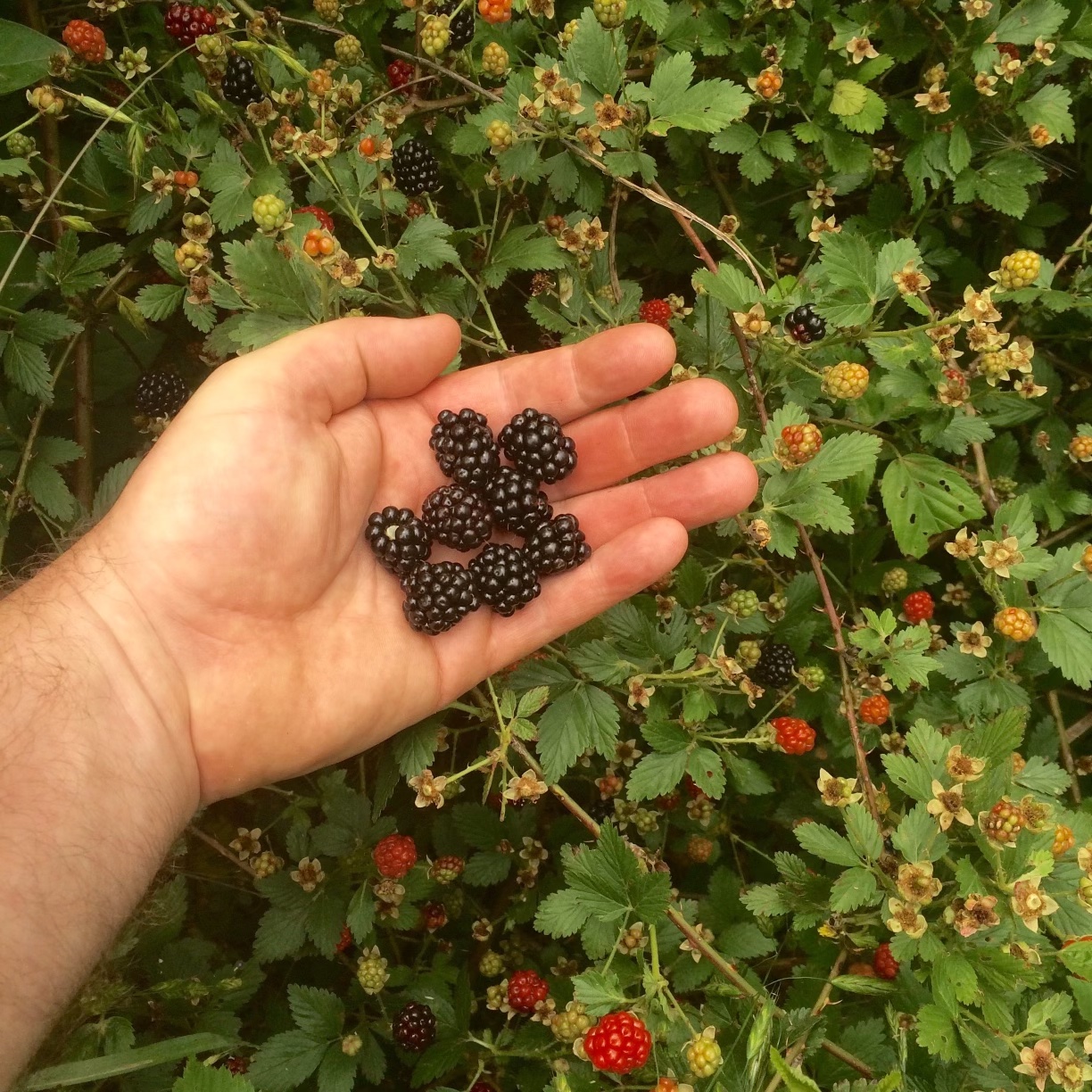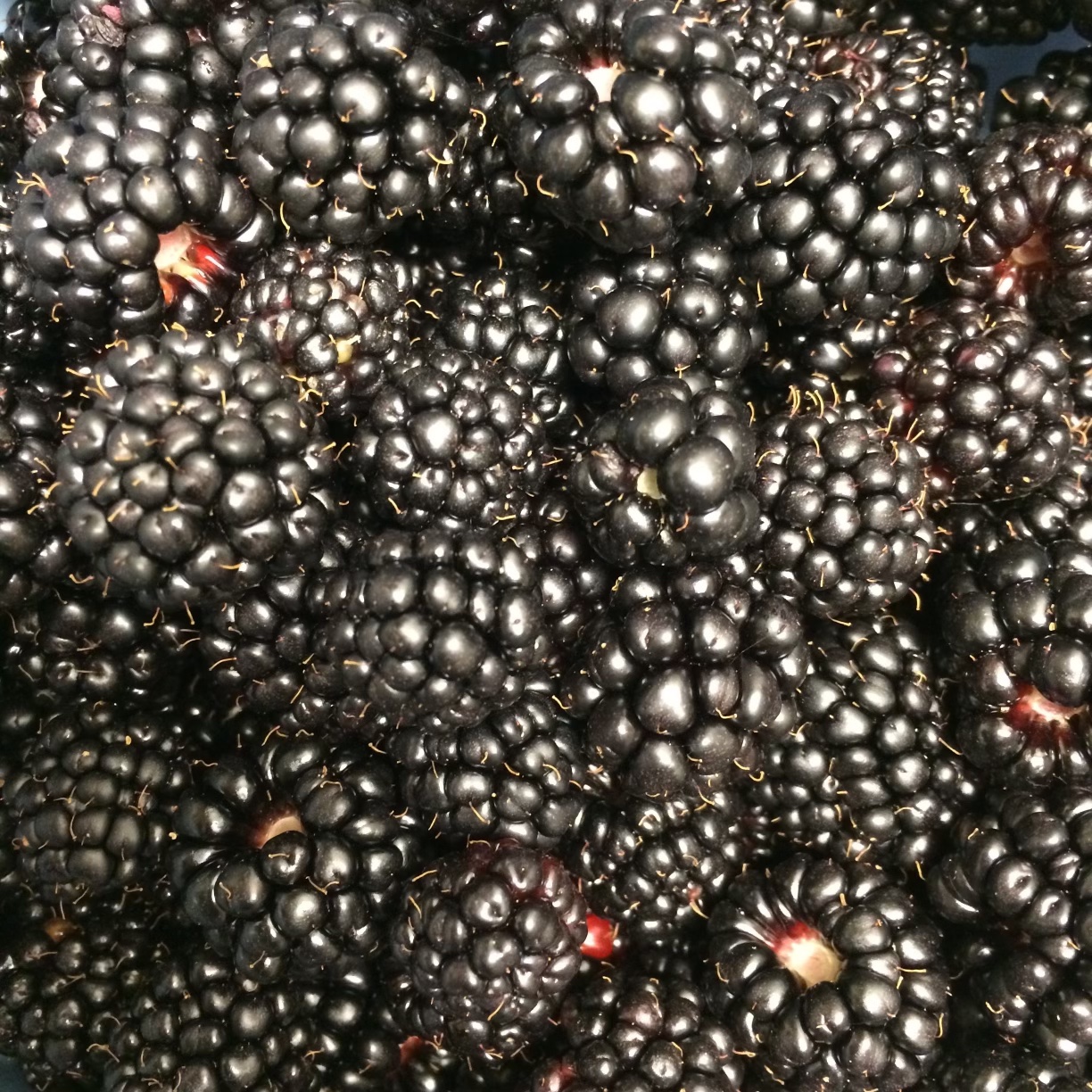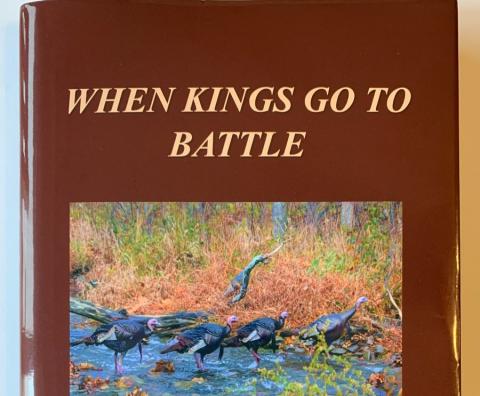Chris Bridges
A great many of us have grown up with the understanding of blackberry as a common weed species in pastures, field margins and neglected farmlands. Often it is seen as a sign of land that has not been tended correctly, whose owner has either missed a season of mowing or has been otherwise negligent. However, I am increasingly recognizing that properly managed blackberry stands may provide a range of benefits for different wildlife species as part of a thoughtful approach to early-successional habitat improvement.
How Blackberry Stands Benefit Your Wildlife and Property

Maintaining brambles for wildlife is not necessarily the first thing I would include on my annual list of habitat improvement projects. However, as I review the scientific literature, a variety of professional recommendations and technical publications on land stewardship for wildlife species, I think that blackberry stands merit some attention. First off, we must recognize that the term ‘brambles’ is shorthand for thickets of blackberries, dewberries and other types of caneberries. Harvesting blackberries to eat fresh or make jelly is a cherished tradition of many families throughout the species’ range. The process, timing and of course the insect pests commonly encountered during this harvest can help to illustrate the unique properties of brambles.
The root systems of these perennials can live for many years, but the canes themselves have a unique growth habitat which land managers can use to maximize their benefit for many game species. First year canes produced by blackberries are called ‘primocanes’ and are primarily vegetative. Flowering, and therefore fruit development, happens on second year growth termed ‘floricanes.’ After fruit development, these old canes are no longer productive for mast production. Please note that these generalities are applicable to wild caneberries. There are a range of improvements available in horticultural offerings of blackberries including thornless varieties and primocane fruiting varieties which are both obviously of great interest to gardeners and fruit producers. While it is assumed that the majority of land managers are working with wild blackberry stands, there are many lessons that are applicable to both wild and improved genotypes.
This process of producing new growth, fruit production on older growth and the associated briars or thorns on brambles really distinguishes blackberries from other early-successional plants. Several researchers have described the importance of the young growth for deer, which to me is surprising given the thorns on wild blackberries but I guess understandable given the tenderness of new leaves. For those of us that enjoy fresh blackberries, it is much easier to imagine the appeal of the fruit itself for songbirds, turkeys, raccoons, foxes and a wide variety of other species.
Additionally, the common insect pests (e.g. chiggers) that we encounter when harvesting really help to remind me of the importance of blackberries for different insects and subsequently for the wildlife for which we are managing. Brambles should obviously be considered by those of us looking to incorporate plants that are helpful for both pollinators and game species. Informal summer surveys of the insect populations supported by blackberries (as evidenced by the bites) provide support for diversity of species that these stands support.
Finally, an understanding of the growth habit of blackberries helps me to appreciate the role of structure, especially in farm habitat improvement. Given the functional diversity of the canes produced in blackberry stands, the cycle of growing primacanes, then floricanes and the development of dense thickets with thorns, we can see how this could be valuable cover and escape habitat for many different species of birds and small mammals.
Properly Managing Wild Blackberries

This enhanced understanding and appreciation of the biology of blackberry stands helps land managers to formulate effective strategies that use this plant to improve wildlife habitat. Most notably, recognizing the growth pattern of blackberry helps me to understand the necessity of periodic renovation of the stand. Depending upon a variety of different factors, mowing, discing and prescribed fire are all alternatives that landowners can employ to remove above-ground portions of blackberry stands.
Periodic renovation and removal of older canes can be helpful to minimize insect and disease pest issues. Even selective removal of older canes could be helpful in maximizing access to sunlight for newer growth. Similarly, control of invasive exotic species and even the limitation of later successional native species of trees and shrubs via herbicide application can be helpful in maintaining the productivity of brambles.
Strategies for habitat management can also be adapted from horticultural growers and blackberry fruit producers. Orientation of mowed rows or strips in the north-south orientation can improve access of plants to sunlight and possibly even air circulation within the stand depending on the width of the strip, hopefully reducing long-term disease pressure in the stand. Similarly, given the observed adaptation of blackberries to acidic soils, stand managers should be able to adapt fertility recommendations of fruit growers, including modest rates of balanced macronutrients to improve fruit growth depending on soil sample results and site characteristics.
One of the most important things that habitat managers can do is to recognize the functions that blackberries can serve. I think most of us are guilty of perceiving this plant as a simple pasture or fenceline weed that must be sprayed, mowed or otherwise dealt with. Additionally, many of us have observed the growth immediately following timber harvest to be dominated by brambles and wondered what harm this stand must be doing for oak regeneration. However, given the unique functions that this plant serves for soft mast production, browse, pollinators, escape and cover habitat, I suspect that opportunities exist for many of us to incorporate blackberries into wildlife habitat management plans.



























